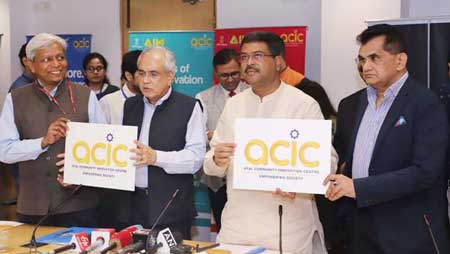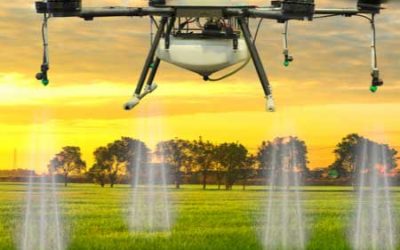Minister of Petroleum and Natural Gas & Steel Dharmendra Pradhan launched Atal Community Innovation Centre (ACIC) in New Delhi, to encourage the spirit of innovation at the community level. This initiative aims to encourage the spirit of innovation through solution-driven design thinking to serve society, a PIB release said.
Speaking on the occasion, Pradhan said, Atal Innovation Mission has a key role to perform in order to achieve the target of five trillion dollar economy by 2025. He urged the NITI Aayog to open innovation Centres in all Gram Panchayats of the country to promote local innovation. Pradhan said innovation is part of every Indian’s daily affairs and there is need to support and promote them.He said that traditional and conventional knowledge available in the country needs to be supported and brought into the mainstream, through innovative mechanism.

The minister urged for innovative mechanism to harness and support traditional knowledge in the country.
Lauding the efforts of NITI Aayog in coming up with the idea of ACICs, the Minister said that they will make available cutting-edge innovation platforms across all corners of our country, with a focus on Aspirational Districts, Tier 2 and 3 cities and to North-east and J&K which will give a fillip to the skill development and employment opportunities in these areas. ACIC’s grassroot-level approach shall focus on a community oriented problem solving through small ideas with a big impact. ACICs will become a conduit for CSR funding by private and public sector firms in addition to direct funding through Atal Innovation Mission (AIM).
Pradhan said reducing the lab to land distance is one of the key objectives of AIM and Atal Community Innovation Centre will help in further strengthening our mission to strengthen the entrepreneurial ecosystem of India. ACICs will add a new chapter to India’s innovation story. It is a platform where the most innovative minds of the country can get access to solutions to modern entrepreneurial challenges.
The Minister also said that India produces approx. 600 MMT of non-fossilised biomass through farm waste, which if converted to energy can help usher prosperity in rural economy, promote a sustainable energy future & make our Annadatas, our ‘Urjadata’, in line with Hon. PM’s vision of Waste to Wealth creation. This is a CSR initiative in true sense.He expressed full support for the culture of innovation in the Country and assured that the public sector undertakings from Steel and Petroleum Sectors will provide support and hand-holding in this innovation mission. “I have asked Public Sector Undertakings (PSUs) to support this initiative, I also request NITI Aayog & AIM to innovate ACICs to help in finding innovative solutions to extract consumable energy from Biomass available in the country”, Pradhan said. The Minister added that Unique and incentivized solutions offered by ACICs will encourage students, researchers and other individuals/group of individuals to ideate and design novel solutions. ACICs will also connect innovative thinkers to our market and mainstream economy.
ACIC is a new initiative of Atal Innovation Mission to support community innovation drive in the country. The program is directed to encourage the spirit of innovation through solution driven design thinking to serve the society. It will focus on underserved and unserved regions of the country which at present lack a vibrant start-up and innovation ecosystem. ACIC will be established either in PPP mode or with support of PSUs and other agencies. The maximum grant-in-aid support form AIM will be up to 2.5 crores subject following compliance to ACIC guidelines and contributing matching form the host institutions and their funding partners.
Following are the distinguishing features of the program:
- Enabling infrastructure for building innovation ecosystem in above proposed areas.
- Community oriented approach to innovation by enabling solutions through advanced tinkering
- Offer opportunities to innovators to ideate in areas of societal importance
- Capacity building of communities in evolving technologies and taking their solutions from ideation to prototype.
- Promoting design thinking process to spur innovation
- Providing a framework to engage local industries to facilitate offering of innovative solutions in their products, services and processes
- Public private Partnership (PPP) mode to ensure financial sustainability and participationof central agencies, PSUs etc. to mobilize resources for running the program
- Offer an opportunity for everyone to innovate, ideate and design impactful solutions, irrespective of their age.
- One of the unique feature of this program wherein talented students and youth of ITI and Diploma will be offered opportunity to display their and build innovative solutions through ACIC.
- The program will offer a big leapfrog jump towards establishing Indian for further scale up the ranking in Global Innovation Index.
The Vice-Chairman of the NITI Aayog Rajiv Kumar and CEO of the Aayog Amitabh Kant also spoke on the occasion.
A new logo, posters, brochure and video, AICC website, and application portal were also launched on the occasion.














0 Comments